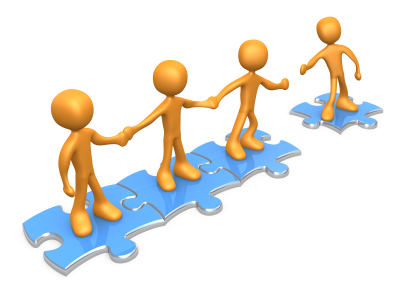The National Steinbeck Center, like many small museums in non-urban communities, often acts as a museum, a cultural center, a conference room, and a community gathering place. In order to effectively serve the community and wear these many hats, we are always collaborating with different organizations of all shapes, sizes, and affiliations.
In the past year, our programs department has partnered, collaborated, joined forces, and teamed up with over 20 different organizations including: local, national, and international museums; aquariums; scientific institutions; government bodies; school districts; local dance and performing arts groups; community groups; libraries; orchestras; after school programs; and affordable housing organizations.
Working with so many different types of organizations and communities, we’ve come up with a short list of things to keep in mind while developing a successful partnership:
- Open, honest and consistent communication. When working with one or more groups on a project, communicate with one another frequently and honestly. If you start collaborating in January for a program in September, you may not have a lot of action items the first couple of months. Even so, it is useful to keep everyone linked in and sharing ideas, suggestions, or just confirming their commitment to the project. As we all know, a program can change a lot from conception to implementation, and by keeping everyone involved from the outset it ensures that no one is surprised when things begin to be altered.
- Develop clearly defined and realistic goals right from the beginning. At the start of your partnership, make sure all participating groups know exactly what they are working towards, and what success would mean for each organization. Perhaps one group is looking for increased participation numbers and the other wants to diversify their audience base. It is fine to have different goals, as long as everyone understands what those are. By keeping those goals front of mind throughout the partnership, it will ensure a healthier working relationship, a clear idea of what success means and avoid potential “mission creep.”
- Be flexible. Even the best-designed plans sometimes can hit a snag. Lack of resources, loss of board support, unexpected illness, flakey volunteers – by working with another group you take on the chance of having any of the above and many more problems present themselves at inconvenient times. Remembering to “roll with the punches” throughout the process will ensure a more productive and respectful working relationship. That being said, if an organization is not holding up its end of the deal, it is important to recognize when it is time to walk away, and move forward on your own.
- Most importantly, 1+1 has to equal more than 2. By working with this other organization, are you going to end up with a better outcome than if you had gone it alone? Partnerships take a lot of time, energy, and coordination, and so you want to make sure that the sum of two parts is greater than its whole. Be strategic with whom you partner. Make sure they bring something to the table that you don’t already have or that you want to strengthen. You want to walk away feeling that you leveraged the collaboration to its fullest extent and created an outcome that would not have been feasible otherwise.
There are many reasons to collaborate with other organizations, and small museums in particular can really leverage resources by working together. Despite the potential road blocks, when a good partnership is developed, museums can truly broaden their impact and relevancy within their community.
Other useful insights on collaboration:
- Museum 2.0 on “On Saying Yes” http://museumtwo.blogspot.com/2011_09_01_archive.html
- Phillips, Ruth. “Community Collaboration in Exhibitions: Introduction” in Museums and Source Communities: A Routledge Reader. Ed. Laura Peers and Alison K. Brown. (London: Routledge, 2003)
Elizabeth Welden-Smith is the Curator of Education and Public Programs at the National Steinbeck Center in Salinas, CA. Born in Salinas, Elizabeth received her masters in Museum Studies from the Australian National University and her B.A. in European History from Mills College in CA. Elizabeth has returned to her hometown and is working with local and non-local organizations to provide diverse and robust programming for Monterey County communities.




